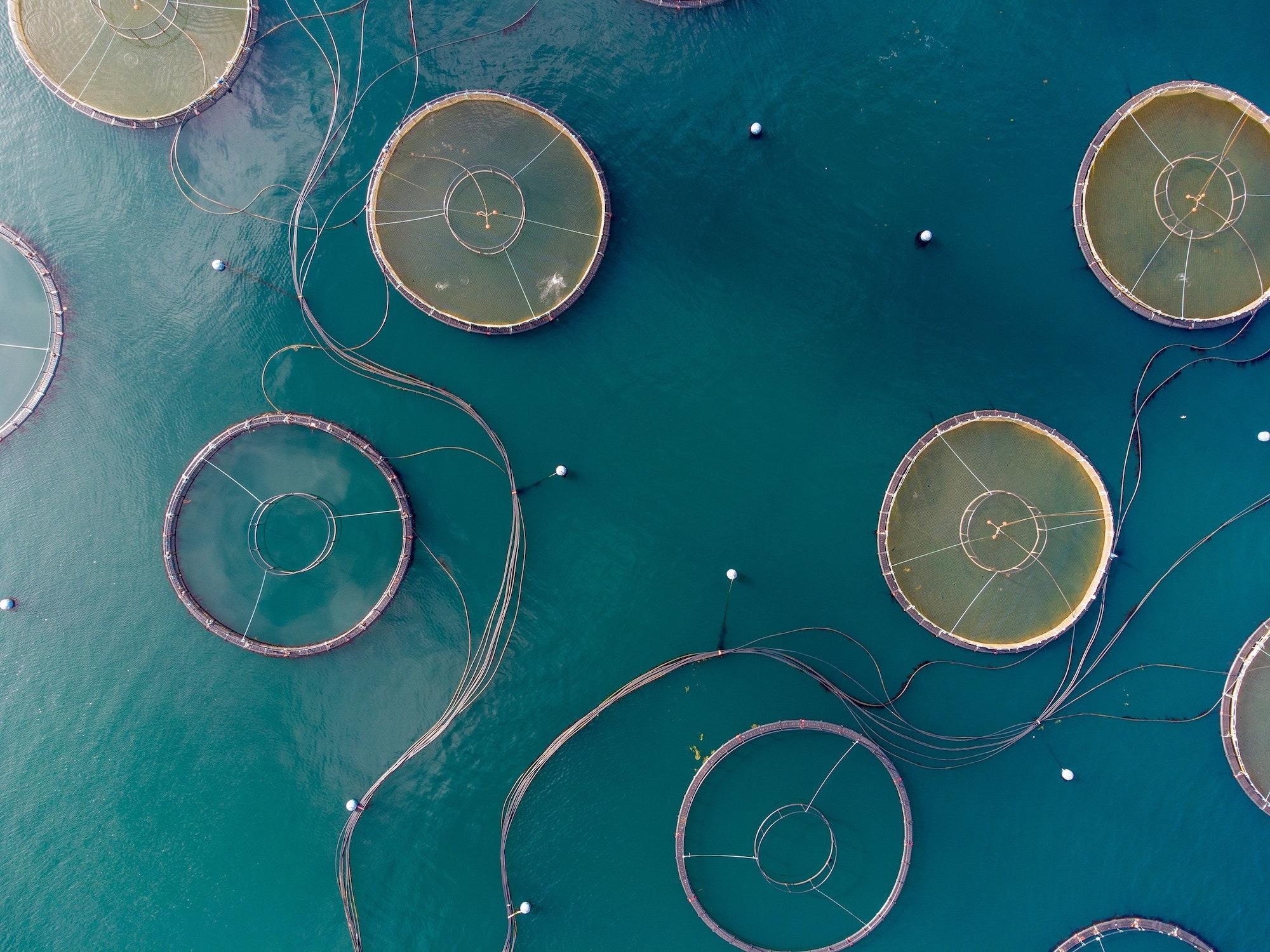According to a new University of British Colombia study, the supply of farmed seafood such as mussels and salmon is estimated to fall 16% around the world by 2090 if steps to mitigate climate change are not taken.

Image Credit: Bob Brewer/Unsplash.
Ocean-farmed seafood or mariculture is frequently viewed as a solution for the issues of dwindling stocks of wild fish and increasing human demand, and is projected to increase significantly in the coming years, says lead author Dr. Muhammed Oyinlola (he/him), a postdoctoral research fellow at the Institute for the Oceans and Fisheries (IOF).
But the new modeling study states that the industry is as susceptible to the impacts of climate change as any other.
If we continue to burn fossil fuels at our current rate, the amount of seafood such as fish or mussels able to be farmed sustainably will increase by only eight per cent by 2050, and decline by 16 per cent by 2090.
Dr. Muhammed Oyinlola, Study Lead Author and Postdoctoral Research Fellow, Institute for the Oceans and Fisheries
By comparison, in low emission situations where action is taken to alleviate climate change, mariculture is estimated to increase by approximately 17% by the mid-21st century and by approximately 33% by the end of the century, relative to the 2000s.
The model takes into consideration numerous factors, including varying ocean temperatures, ideal mariculture areas in the future, and the supply of fish oil and fishmeal. It scrutinized about 70% of the world’s mariculture production as of 2015, concentrating on Exclusive Economic Zones, where most of the world’s seafood farming takes place.
Climate change will impact mariculture production diversely contingent on where the farms are located in the world, and what they produce, says Dr. Oyinlola. The worst-hit areas in the high-emissions situation — Norway, Bangladesh, Myanmar, The Netherlands and China — could see their mariculture production drop by nearly 40 to 90%.
Climate impacts on mariculture include variations in the area of workable ocean wherein to farm fish in addition to the stock of food that is used to feed them. Fish farms generally use fish oil and fishmeal, which are mainly made up of smaller fish such as anchovy and herring — stocks which are also endangered by climate change.
Some regions produce more bivalves, such as mussels, oysters, and clams, and in these regions, the impact is smaller. In regions that produce more finfish, such as salmon, the impact will be high due to reduction in the supply of fishmeal and fish oil.
Dr. Muhammed Oyinlola, Study Lead Author and Postdoctoral Research Fellow, Institute for the Oceans and Fisheries
Under the present carbon emission rates, finfish farming, such as salmon, is estimated to decline worldwide by 3% by 2050, and 14% by 2090. Bivalve farming is estimated to grow by 2050 and drop by 2090 under both climate scenarios.
Countries where mariculture is widely carried out, especially for finfish production, such as Chile, Norway, Finland, Iceland and Bangladesh, will be the worst hit, according to Dr. Oyinlola, whereas countries that produce more bivalves will be steadier or in Canada’s case, will increase.
Vegetarian Fish: Feeding Fish Soybeans
The study also discovered that replacing fish oil and fishmeal with plant-based foods such as soybeans could help lessen the impact of climate change on fish farms.
When a quarter of the fish food was replaced with alternatives, under a low emissions setting, mariculture production was estimated to grow by 25% by 2050 and 31% by 2090.
With no modification to existing emissions, when a quarter of the fish food was replaced with alternatives, mariculture production was estimated to grow by 15% by 2050 and 4% by 2090. When half the food was replaced in both climate settings, these percentages grew.
This study highlights the need to diversify mariculture development from the current focus on fish.
Dr. William Cheung, Study Senior Author and Professor and Director, Institute for the Oceans and Fisheries
Climate-adapted mariculture would contain species that are not reliant on fishmeal and fish oil, such as algae or shellfish, or those that can consume non-fish-based feed. “Farming these species generally helps to reduce exposure of seafood farming to climate hazards.”
While there is an eagerness about ocean mariculture helping to boost seafood production, the study reveals that if humans do not boot out climate change, such eagerness will be tempered, says Dr. Cheung.
Climate change affects everything, including aspects of seafood farming we’ve not previously considered. We need to act, and quickly, to mitigate climate change rather than rely on one solution to solve all our seafood production problems.
Dr. William Cheung, Study Senior Author and Professor and Director, Institute for the Oceans and Fisheries
Journal Reference:
Oyinlola, M.A., et al. (2021) Projecting global mariculture production and adaptation pathways under climate change. Global Change Biology. doi.org/10.1111/gcb.15991.